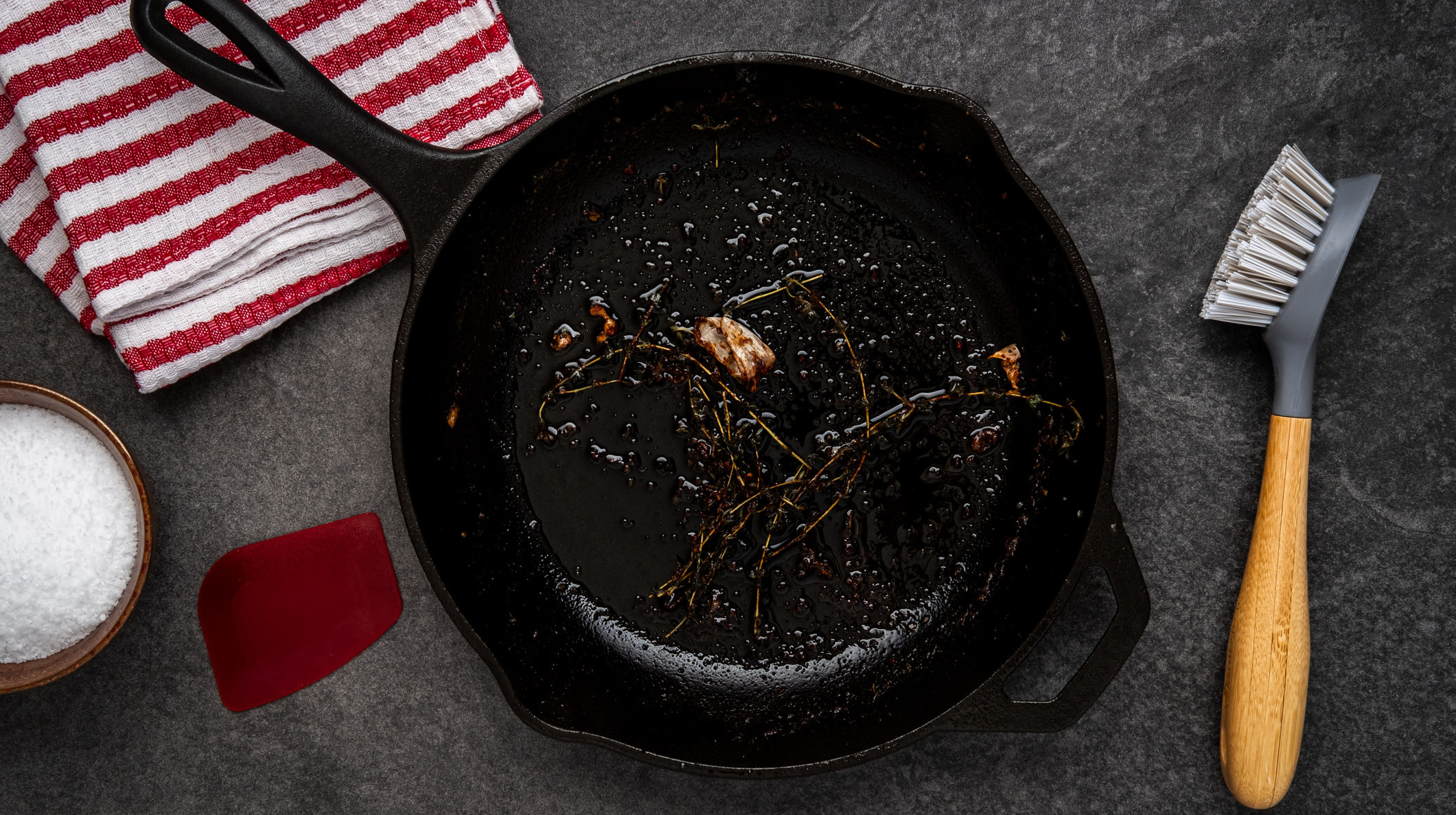What's The Best Way To Wash A Cast Iron Pan?
Before the internet arguments erupt again, let's settle this once and for all.
We may receive a commission on purchases made from links.
Brace yourselves—today we're talking about cast iron pans.
I've been told that you're not supposed to wash cast iron pans with soap and water, but I have no idea how I'm supposed to clean it. How to I get all the gross stuff out of my pan, and why are cast iron pans so hard to take care of?
I'm very glad a reader asked this question, because Twitter erupts into a firestorm over cast iron pans every few months, at which point I'm forced to say the same damn things over and over again, and I am exhausted by this malarkey. I am doing this once, so I have something to copy/paste the next time someone kicks off the latest round of debates. Remember: our species has been cooking with iron pans for literally thousands of years, and if millions of past humans could do it without agita, you can, too!
Dude you need to get yourself a cast iron skillet. its the exact same as other pans but way heavier and more expensive and you can't ever clean it for some reason
— computer man (@gloomfather) November 21, 2019
I cook just about everything in a cast iron skillet: meat, vegetables, pie, pancakes, and, of course, pandowdies. It's a workhorse of a pan with so many glorious virtues, but the thing I love most is that when they get hot, they get hot, and they stay that way. There's no other pan that gives you that sort of intense Maillard reaction action; consequently, everything you cook in it has the opportunity to become its best self. But, if the pan isn't cleaned after use, the residue of your perfectly browned food will stick around and carbonize into a tough, blackened layer of burning. So how are you supposed to get that off? By washing your damn pan after you use it.
"But you're not supposed to wash cast iron, or else you'll remove the cure from the pan!" This is not true. You have been sold a lie.
If you put uncured cast iron under a microscope, you'd see it has a jagged surface full of nooks and crannies that need to be protected from things that can damage the iron, like water. To create a protective barrier, or "cure," the iron is seasoned—that is, rubbed with oil or fat, which fills in all those tiny pockmarks—and then put in a hot oven. While exposed to extreme temperatures for a long period of time, the oil's fatty acids begin to bond into larger molecules called polymers. Think of polymers as a sort of all-natural plastic. Eventually, the polymerized oil transforms from a liquid into a rock-hard solid, bonding with the iron pan and forming a carbon matrix on its surface. You can't simply wash the cure off a cast iron pan with soap and water, because it's molecularly bonded to the cast iron. While it is possible to remove this seasoning with enough soap and water—like by running it through a dishwasher, soaking in the sink, or not drying after washing—a quick scrub after cooking isn't going to do the damage that you think it will. A squirt of soap may be able to cut grease, but folks, it ain't so strong it can strip metal.
After you're done cooking, pour any excess fat or liquid out of the pan and let it cool completely. If there's any stuck-on food that needs to be scrubbed out, put a palmful of coarse salt in the pan and use a sponge or paper towel to scrub it all off. Next, give your pan a quick wash with soap and water, dry it off completely with a towel, and put back on the stove over high heat. Let it sit for a minute or so until you're sure it's completely dry, then turn off the heat, add a tiny bit of oil, and rub it all over the inside of the pan with a wadded-up paper towel. Every time you do this you'll be creating another microscopic layer of polymer, further protecting the pan and making its surface non-stick, which makes it even easier to clean the next time you use it. See? None of this is complicated, and none of us need to be getting all worked up over cookware. Stop overthinking it, and go enjoy your pans.
Have a cooking-related question that needs answering? Email us at hello@thetakeout.com.
